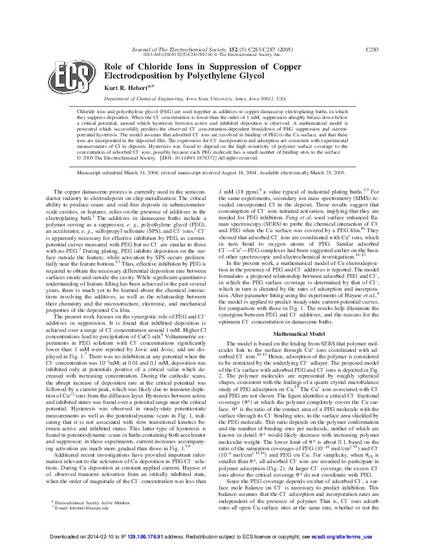
Chloride ions and polyethylene glycol (PEG) are used together as additives to copper damascene electroplating baths, in which they suppress deposition. When the Cl− concentration is lower than the order of 1 mM, suppression abruptly breaks down below a critical potential, around which hysteresis between active and inhibited deposition is observed. A mathematical model is presented which successfully predicts the observed Cl− concentration-dependent breakdown of PEG suppression and current-potential hysteresis. The model assumes that adsorbed Cl− ions are involved in binding of PEG to the Cu surface, and that these ions are incorporated in the deposited film. The expressions for Cl− incorporation and adsorption are consistent with experimental measurements of Cl in deposits. Hysteresis was found to depend on the high sensitivity of polymer surface coverage to the concentration of adsorbed Cl− ions, possibly because each PEG molecule has a small number of binding sites to the surface.
Available at: http://works.bepress.com/kurtr_hebert/37/

This article is from Journal of the Electrochemical Society 152 (2005): C283–C287, doi:10.1149/1.1878372. Posted with permission.